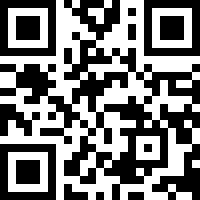Supply chain counterfeiting is a widespread issue that affects practically every business. There are fake electrical components, car parts, consumer products, pharmaceuticals, and even fake wines. While counterfeit goods cost manufacturers and distributors billions of dollars each year, the risks to consumers can be far bigger. Faulty counterfeit vehicle parts or consumer products can overheat or catch fire, and counterfeit medications kill over one million people each year.
While manufacturers, distributors, shippers, and government agencies are working hard to eliminate counterfeit goods from the supply chain, identifying counterfeits is difficult. In 2018, counterfeit goods cost global brands more than $232 billion. The counterfeit drug market alone costs around $200 billion every year, which is enough to bring 13 new drugs to market each year. Losses from counterfeit car parts are projected to exceed $2.2 billion per year, not including those resulting from safety concerns and legal liabilities. Counterfeit consumer goods cost more than $100 billion every year, while counterfeit computer chips cost US corporations $7.5 billion per year, costing 11,000 jobs.
Blockchain Technology for Proof-of-Origin or Provenance
Blockchain provides a safe and reliable tracking system from one end of the supply chain (the creation or mining of raw materials) all the way to the other end of the supply chain, so it aids in the fight against counterfeiting by identifying provenance (i.e., proof-of-origin) of a product. Legal enforcement authorities can more decisively establish the counterfeit nature of suspicious products, and businesses can protect their bottom lines, thanks to blockchain’s ability to identify provenance.
Companies use smart tags to perform blockchain provenance identification, which identify a product’s place of manufacturing, track its position, and assign other important information to it at each stage of the supply chain. The following are examples of smart tags:
QR codes (Quick Response Codes)
QR codes are a sort of barcode that may encode information such as phone numbers or internet addresses and are quickly read by smart phones or tablets. In the pharmaceutical industry, for example, each batch of drugs delivered can be marked with a unique QR code that includes information about the manufacturing source, production date, formulation, and so on. In the event of an issue or recall, the QR code can be used to identify each tainted unit.
RFID (Radio Frequency Identification) Tags
RFID-tags are quickly becoming popular solutions for product identification. Because they contain a little microchip, they provide functionality that can be exploited for security purposes. This chip feature allows for the authentication of a product and, as a result, the detection and prevention of counterfeiting. RFID are tags that transfer information to readers via radio waves. A reader is a device that generates radio waves and then receives a signal from an RFID tag. RFID with a challenge-response strategy can be very effective in terms of security. Furthermore, it is invisible and allows authentication via packaging using an NFC-enabled smartphone.
Signatures on Metallic or Ceramic Surfaces
Laser marking equipment etch barcodes and designs onto metallic or ceramic surfaces. Some of these marking machines generate 2D data matrix metal tags that users scan with a dedicated scanner to perform data collecting and product tracing activities.
When a user places a smart tag to a product, the smart tag uploads data to the blockchain for each new transaction, along with immutable (cannot be altered) time stamps. As a result, a supply chain partner at any point in the supply chain can trace that product back via the supply chain to determine where and when it originated.
While it would be technically challenging, a scammer could build a fake smart tag by copying a genuine smart tag. Scanning that counterfeit tag, on the other hand, would reveal the history of the actual item, allowing a client to determine that the scanned tag is a counterfeit.
Takeaway
During this crisis, blockchain is garnering deserved attention from businesses. Having been trivialized and connected exclusively with cryptocurrencies for a long period of time, it is now being acknowledged as offering the required transparency and security that can contribute to brand protection and people’s safety.
Visit IDlogic to learn more about the most advanced anti-counterfeiting solutions.


